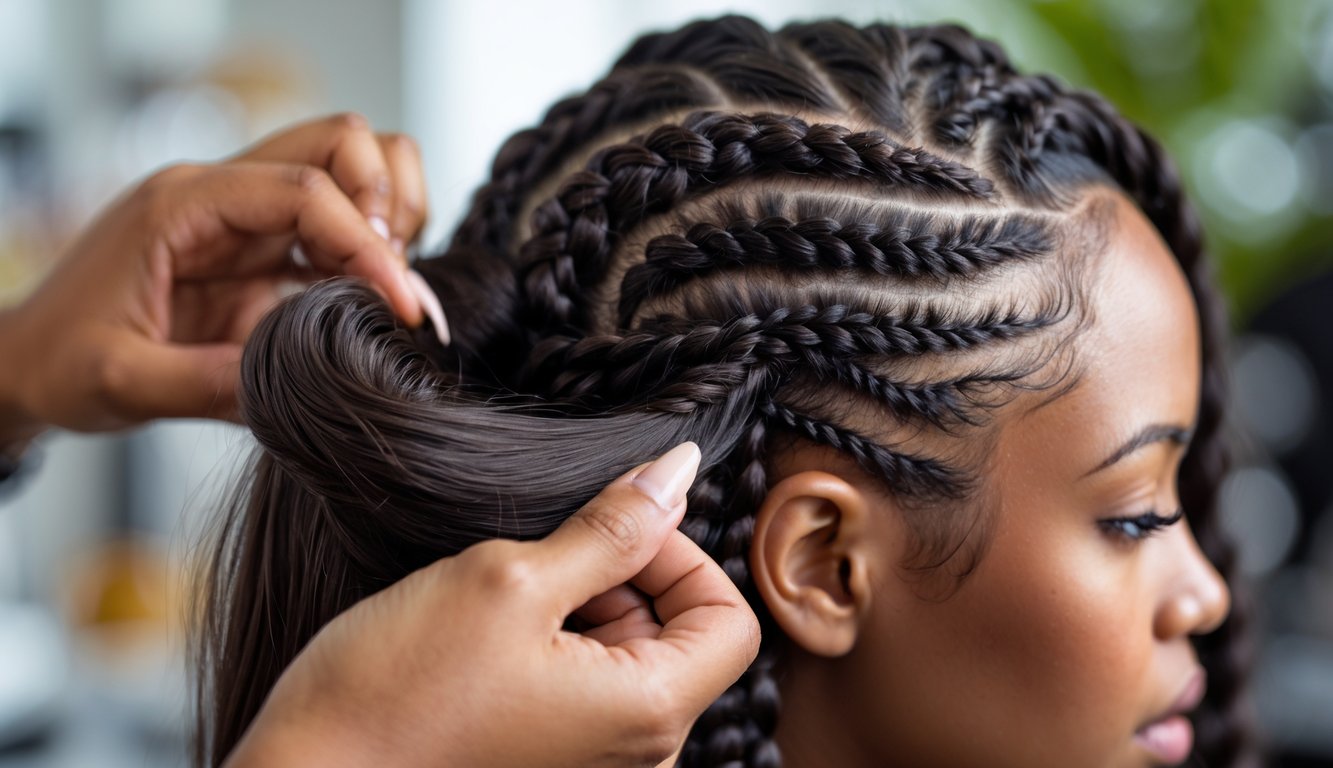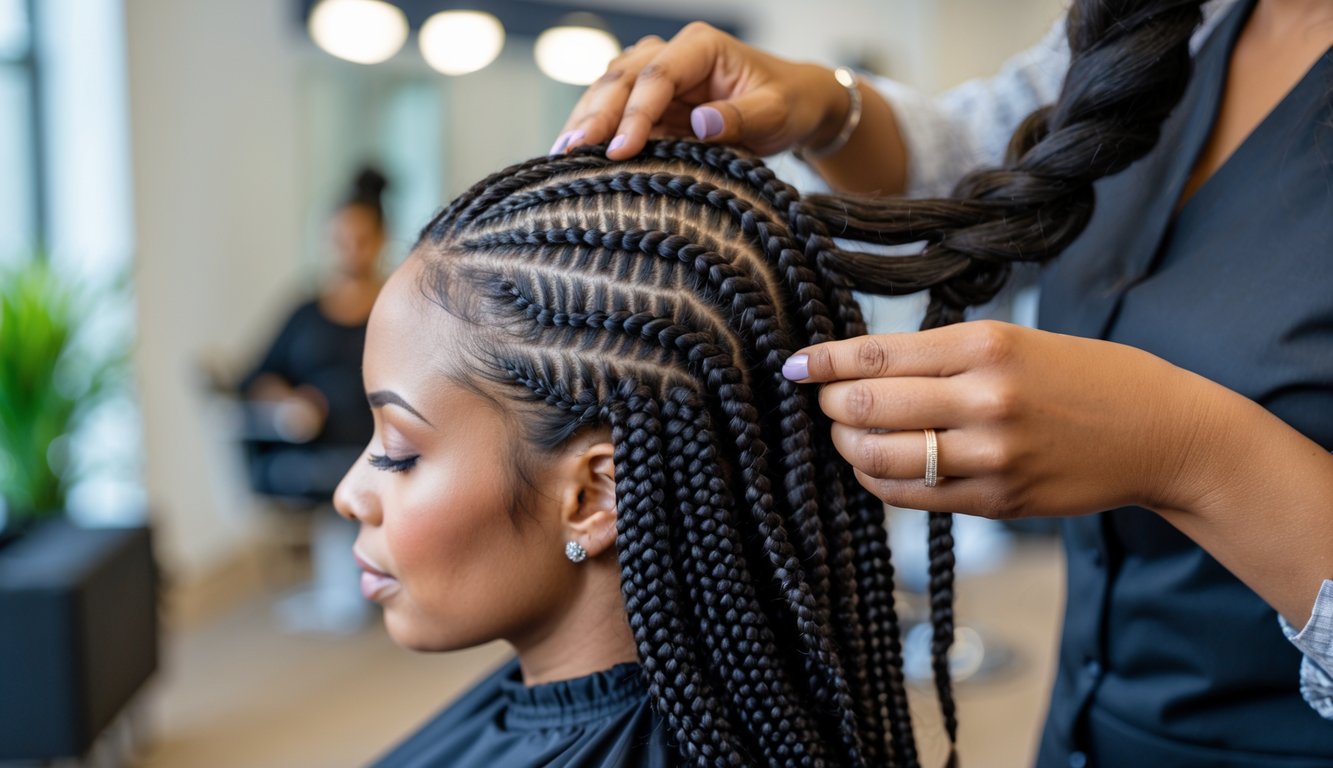
How Tension and Sectioning Impact Scalp Health
Still can’t get over how some stylists insist tight braids keep hair neat, but the fallout (literal and otherwise) tells a different story. Tension, sloppy parting, slicing off circulation like I’m prepping for brain surgery—no conditioner’s fixing that. Nobody mentions scalp circulation or follicle trauma at the appointment. Why?
The Role of Tension in Hair Breakage
Gripping too tight? Hair snaps before payday. Dr. Angela Lamb (Mount Sinai, 2023) says that “tiny popping” during install isn’t nerves—it’s microtears. I can’t forget that JAMA Dermatology 2018 study: 35% of regular braid-wearers showed traction alopecia symptoms. My grandma thinks invisible tension means professional, but repeated pulling ruins regrowth cycles. Your temples will scream before your stylist admits defeat.
Protein treatments, satin scarves—sure, try them. But chronic root stress? Nothing fixes that. Tighter doesn’t mean longer-lasting, just faster damage. Tension headaches are the warning. Nobody warned me before sending their CashApp. Now, I check every client’s nape for thinning before they even sit.
Proper Sectioning for Healthy Braids
Parting is a geometry nightmare, but everyone wants microbraids on fragile baby hair. Uneven sections create weak spots. Big versus small parts aren’t random—they decide who sheds first. My rule: avoid hairline drama. I use a rat-tail comb and Denman D3 for clean, not-too-skinny parts. Don’t let anyone tell you big squares are “lazy”—they’re just safer.
When stylists rush, tension gets weird. No serum can fix badly planned grids. The difference between ½-inch and ¼-inch parts? Huge. Too small, and your edges are gone. Picture mini stress points everywhere—like overstuffing a Target bag.
Preventing Scalp Irritation and Shedding
People think itch means growth (it doesn’t, it’s just inflammation). I’ll drag out witch hazel mid-install if I have to—anything to stop the cycle. Dermatologists keep repeating: braid breaks every 6-8 weeks, plus actual washing while wearing braids, cut flaking in half, but people treat scalp neglect like a family tradition.
Knotless braids over traditional box? Literally saves weeks of post-takedown shedding—ask anyone who panics at that first shampoo. Tight sectioning makes it worse. Tea tree oil or piroctone olamine help, but not once you’re picking dried blood. Next time someone brings six-month-old style “goals,” I want a scalp close-up, not just the length. Nobody Instagrams bald spots.
Choosing the Right Braiding Techniques

Ever just stare at your hairline in the mirror and think, “Wait, was that always this far back?” Yeah, me too, and it’s not always genetics—sometimes it’s just bad braiding decisions sneaking up on you. I’ve seen it all: too-tight braids, marathon installs, people clinging to the same tired pattern for years and then acting surprised when their hair starts breaking off like it’s mad at them. I mean, how many times do I have to say it—if you pick the wrong method, you’ll know. Fast.
Overview of Modern Braiding Methods
Honestly, I don’t get why people still show up wanting the exact same braids they got in high school. There are so many new options now—knotless feed-ins, tension-control parting, even those hand-braided plaits that don’t need a single synthetic strand. I sat through this industry Zoom last week (everyone’s camera off, someone’s toddler yelling), and a trichologist basically shouted, “One-third of traction alopecia is from bad braiding patterns!” Did anyone listen? Doubt it.
And synthetic hair, wow, it’s a minefield. I had a client break out in hives from some cheap pack right before her wedding—talk about a meltdown. If you’re piling on edge gels and blasting with heat, all for that “perfect” part, you’re probably just frying your follicles. I rotate between three textures a week: box braids (classic), loose French, and some weird hybrid flat-twist I made up because I got bored. Nobody ever checks their braid tension, though. Ever.
Knotless Braids for Less Stress
Knotless braids still get side-eyed—people ask, “Aren’t those going to unravel?”—but honestly, I barely see damage with them. Dermatologists at every workshop I’ve been to keep hyping knotless as the least traumatic braid for growth, and I’m not arguing. Compare the scalp-pulling standard install to a knotless start and, trust me, your hair will thank you. But, okay, nobody warns you: they take forever. You need patience. Distribution is everything.
The first few passes—no knots—mean your hair actually moves with the extension, not against it. If you’ve ever noticed red patches or thinning edges, it’s probably from that old-school “cinch and go” method. I watched a stylist once add tiny bits of extension hair every couple of crosses, and the client walked out with zero irritation. Wild.
Clients don’t leave clutching their heads, either. Maintenance is easier, lighter, and new growth doesn’t lock up as much. Still, every week someone whines, “Can you make them tighter so they last longer?” Sure, if you want to lose your edges. I won’t do it—sorry, not sorry.
Box Braids Versus Traditional Cornrows
Box braids—everyone’s default, right? It’s all little squares, every braid its own thing. Super versatile, and you can actually get to your scalp for once. But, wow, the tension risk is real. Ignore it and you’ll get micro-breakage, especially if you crowd the parts or your hair’s fine.
Cornrows are a whole other story. The “S” pattern exposes more scalp, and if you’ve got fragile edges or flaky skin, run from tiny, tight rows. I watched a client’s cornrows fall apart after spin class—sweat just wrecked them. Heavy products (like shea or castor oil) can help, but then you’re stuck with buildup, especially with cornrows. And yeah, people blame their shampoo for breakage when it’s really just bad parting near the hairline.
If you want growth, loose installs—cornrows, box braids, whatever—are only as good as the hands that do them. And if someone’s scratching their scalp right after you finish? Something’s wrong. Maybe everything’s wrong.



